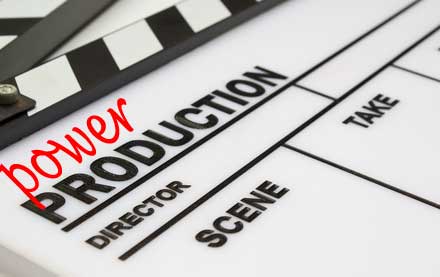EMPOWERS YOU TO PLAN AMAZING FILMS and VIDEOS
For school or for personal use...
Whether shooting on set or on location...
Before you step onto the set, before you start to roll camera...
Know what shots you want to capture.
Preproduction storyboarding is key to a successful project.
Start your projects off with a shot plan that helps you visualize, organize, refine and pitch your story. If you can draw, grab a pencil and use the link to our Free Storyboard templates.
However....if you don't draw like a pro or need to make boards fast and easily, Storyboard Quick is a great place to start. Using built-in artwork, you can quickly communicate cinematically and in style. StoryBoard Quick helps turn words into pictures to get you into production quickly!
Are you an Indie Filmmaker? We recommend...
StoryBoard Quick Demo
Learn More
A storyboard is a visual plan or a roadmap for your project. It's done by creating a series of frames that will represent each shot or sequence of your script.
When done, it will show you where you are in the story and where you're going next. It will look something like a comic once you're finished and can be used during the shoot to track the progress of finished shots.
Preproduction is the time to refine ideas before you start to shoot.
As a filmmaker, your footage is your canvas and to use it creatively takes planning. That's where the storyboard process comes in. But where to start?
Once you know the project type, decide who is the audience for your storyboards. Who will see these boards? (are they only for you? or do you need to show production department, producers, client, teacher?)

See Martin Scorsese on the Importance of Visual Literacy
Need to have shots set up for you?
View a demo of StoryBoard Quick Studio [with QuickShots built in].
Determining who will view your boards will help you choose the amount of detail needed in each shot. Here are some "types" of storyboards and how they're used:
Shooting boards (Film/DV): Visually scripting a story and creating a shot list for the crew to use on the set. They're called "shooting boards" because images are rough sketches that communicate the setups and main elements of each scene. This type of board can be made by the director and shared with the crew. Shooting boards cut down the setup time for each shot and preempts questions from crew members. In StoryBoard Quick, captions can hold slug lines and dialogue text; camera and lighting notes; or prop and scenery notes.
Presentation boards (Film/DV/Animation): Used to communicate an idea or concept to clients, producers, a director or studio execs. These boards are "more polished" than shooting boards and are meant to impress and persuade; to "sell" the concept. Use digital photos of actual locations and layer characters, props and other elements over the background. In StoryBoard Artist storyboard software captions can hold character dialogue or use Timeline sound tracks to place voice over along with music and/or special effects. Actual production notes don't necessarily need to be presented in these type of boards. Many animation projects lay down sound tracks first and build their animation (key frame style) around the sound.
Commercial boards: Key frames are used to show script ideas/concepts and product placement. Commercials are typically a minute or less, therefore a lot of info needs to be communicated quickly. Captions or sound tracks can give Voice Over (announcer) dialogue and music cues. Ad agencies and commercial production houses use printed boards and animatics to help clients visualize the tempo of events as well as the idea. Ad agencies distribute storyboards to production houses to clarify the bidding process.
Game prototype & boards: Game development start with mock-ups of an idea to give investors a blueprint for project design. Refining details prior to rendering and programming saves time, money and allows for creative input at a stage when input can be helpful.





 Easy-to-navigate Storyboard Interface
Easy-to-navigate Storyboard Interface Make videos like the pros
Make videos like the pros  Overview
Overview Powerful Imports and Exports
Powerful Imports and Exports  Import screenplay script text
Import screenplay script text 


